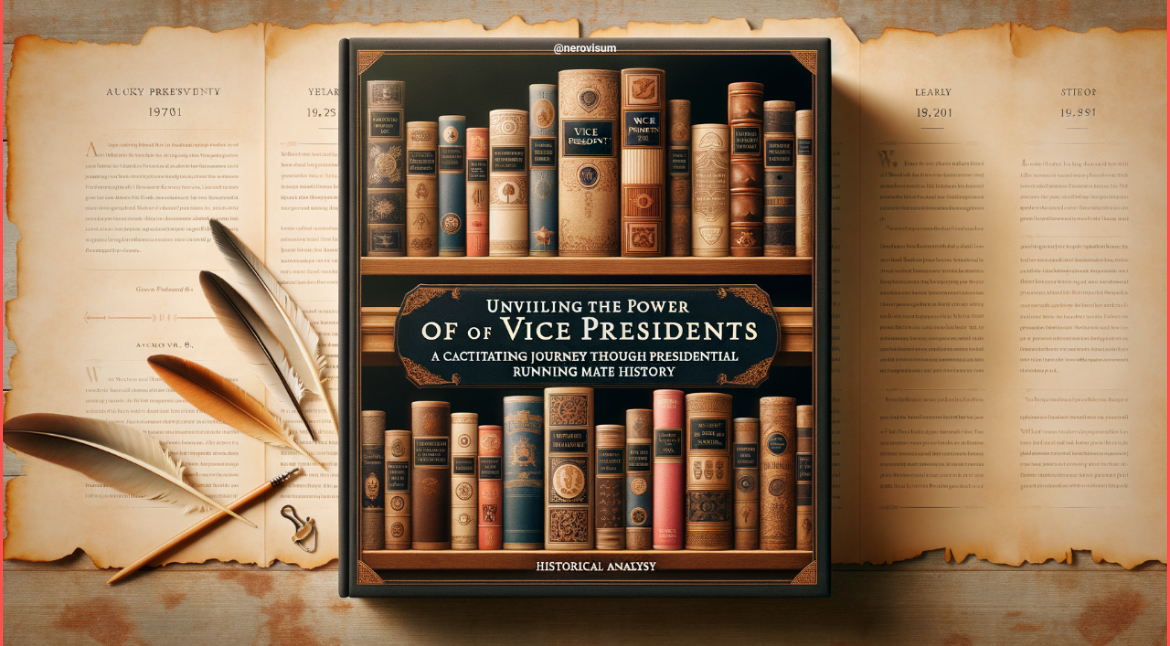
Unveiling the Power of Vice Presidents: A Captivating Journey Through Presidential Running Mate History
In the grand theater of American politics, the role of the vice-presidential candidate, often referred to as the running mate, has evolved into a fascinating subplot that adds depth and intrigue to the presidential election saga. Like a skilled playwright, the selection of a running mate is a delicate balance of strategy, appeal, and historical precedent, with each candidate bringing their own unique flair to the grand stage.
In the early days of the Republic, the vice presidency was often an afterthought, a consolation prize for the runner-up in the presidential race. The original intent of the framers of the Constitution was that the vice president would be the person with the second-highest number of electoral votes. This system, however, soon revealed its flaws, as evidenced by the election of 1800, where Thomas Jefferson and Aaron Burr, both from the same party, ended up in a tie. The resulting political maneuvering and backroom deals led to the passage of the Twelfth Amendment in 1804, which established the practice of running as a ticket, with separate votes for president and vice president.
As the 19th century progressed, the choice of running mate began to take on greater significance. Political parties sought to balance their tickets, selecting vice-presidential candidates who could appeal to different regions, ideologies, or factions within the party. One of the most notable early examples was the selection of Andrew Johnson as Abraham Lincoln’s running mate in 1864. Johnson, a Southern Democrat, was chosen to symbolize unity and to attract War Democrats and border state voters to the Union cause. This choice, while politically astute at the time, had profound implications for the nation when Lincoln was assassinated and Johnson assumed the presidency.
The 20th century saw the role of the vice-presidential candidate become more prominent and strategic. In 1940, Franklin D. Roosevelt chose Henry A. Wallace, a progressive from Iowa, in a bid to secure the support of the left wing of the Democratic Party. However, by 1944, with the war effort requiring broader appeal, Roosevelt replaced Wallace with the more conservative and politically palatable Harry S. Truman. This decision, made with an eye towards both political expediency and wartime leadership, underscored the evolving importance of the running mate.
The latter half of the 20th century and the dawn of the 21st have seen vice-presidential selections continue to reflect the dynamic nature of American politics. In 1960, John F. Kennedy chose Lyndon B. Johnson, a Texan with deep roots in the Senate, to help balance the youthful, charismatic ticket with experience and Southern appeal. In 1984, Geraldine Ferraro became the first woman nominated for vice president by a major party, as Walter Mondale sought to break new ground and energize his campaign. The historic nature of her candidacy was a bold statement, reflecting changing societal attitudes and the desire for greater inclusivity.
More recently, the selections of Sarah Palin in 2008 and Kamala Harris in 2020 have highlighted the increasing importance of identity politics and demographic considerations in the vice-presidential selection process. Palin, a relatively unknown governor from Alaska, was chosen by John McCain in an effort to energize the conservative base and appeal to female voters. Harris, on the other hand, brought her own historical significance as the first woman of African American and South Asian descent to be selected as a running mate, as well as her prosecutorial background and senatorial experience, complementing Joe Biden’s extensive political career.
Throughout the annals of American history, the role of the running mate has evolved from a mere electoral footnote to a pivotal aspect of the presidential campaign. Each selection is a reflection of the broader political landscape, a careful calculus that balances ideology, geography, experience, and increasingly, identity. As we gaze into the future, the drama and intrigue surrounding the choice of running mates will undoubtedly continue to captivate the public imagination, adding yet another layer to the rich tapestry of American democracy.


Be the first to comment
Get involved!
Comments